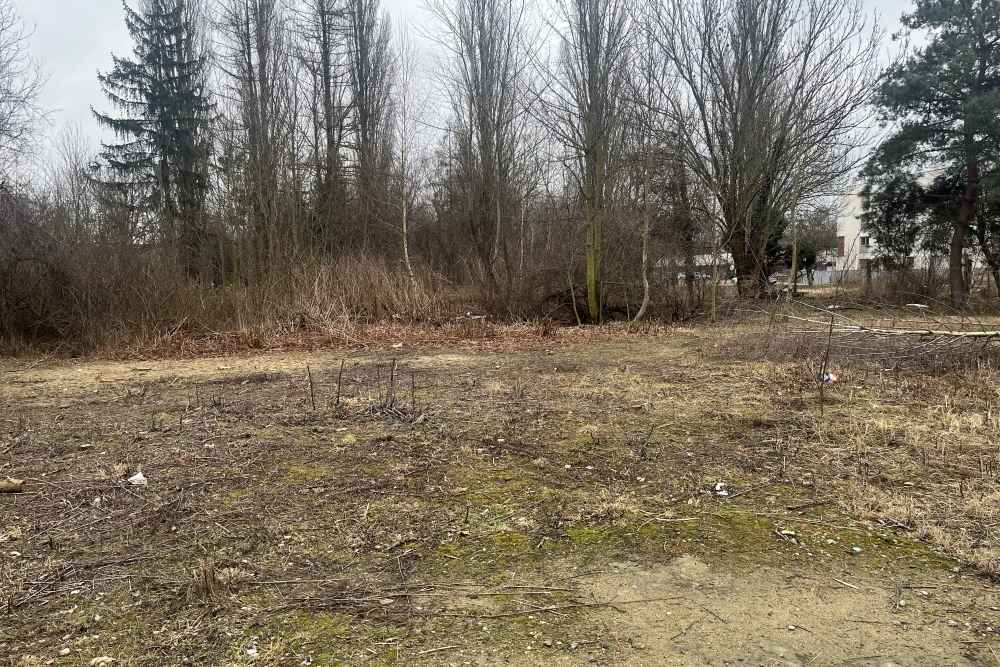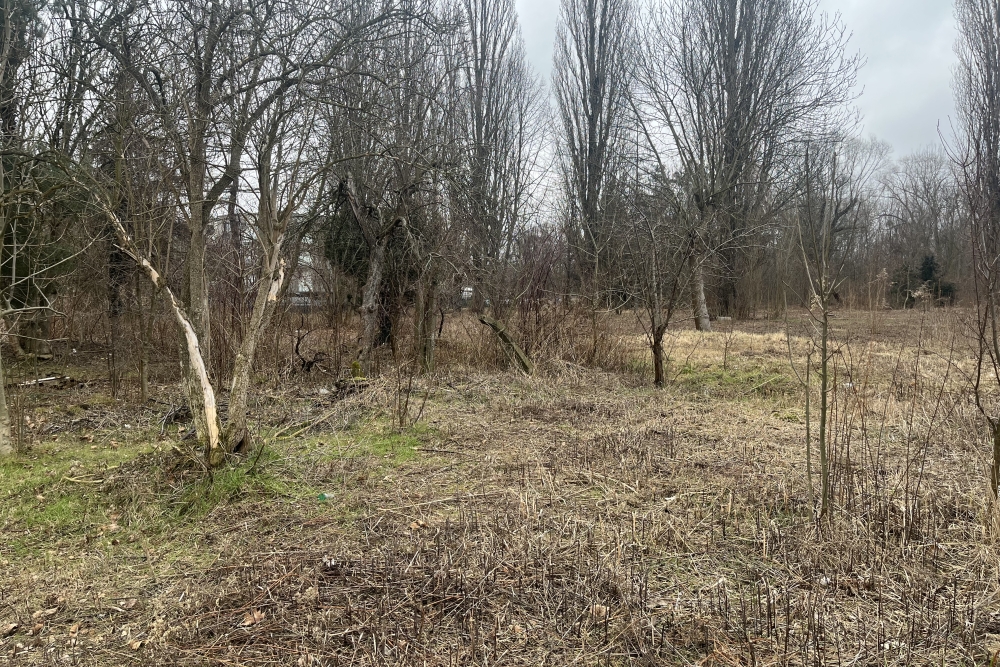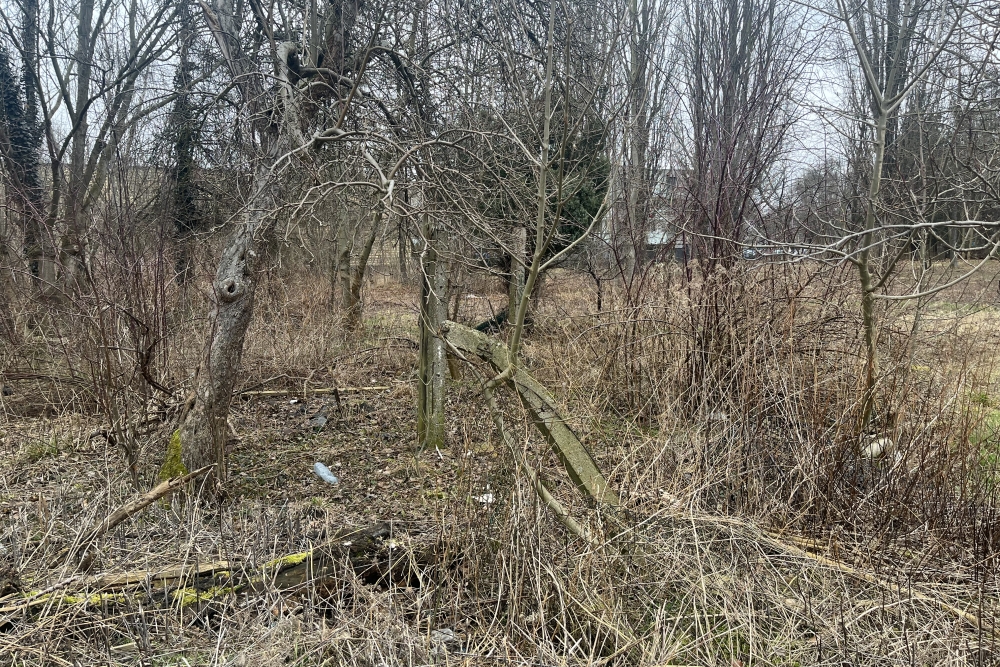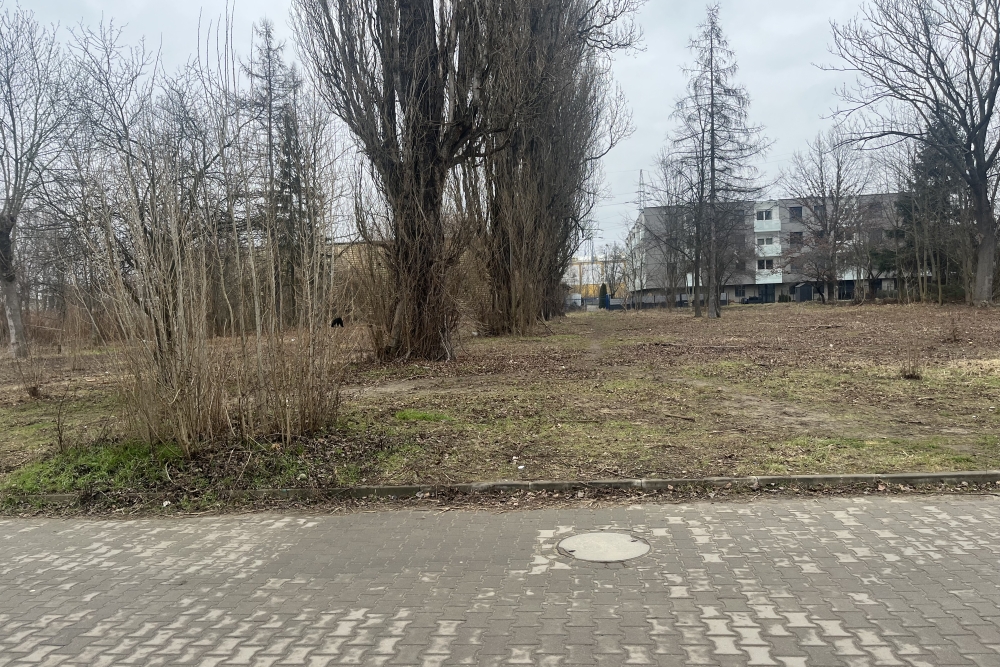Former Labour Camp Burgweide
Arbeitslager Burgweide was the largest forced labor camp in Breslau in the period from 1940-1945. It was located in the area of today's Sołtysowice housing estate, between Sołtysowicka Street (Dorpaterstrasse) and Aleja Poprzeczna (Quer-Allee). From 4 to 10 thousand prisoners of various nationalities were held there. The majority were Polish but there were also Ukrainians, Czechs, Russians, Yugoslavs, French, English and Dutch. They worked mainly in the sugar factory (which no longer exists - it was demolished in 2009), which was adjacent to the camp site.
The camp stretched over an area of nearly 15 hectares. Originally, until the fall of 1944, it was a transit camp - after a short stay, prisoners were sent to forced labour in designated places in Wrocław and Lower Silesia factories and craft workshops or sent to the countryside and to other labour camps.
Overall, there were 25-27 barracks, each of which had a dozen rooms with approximately 50-60 people. There were all kind of barracks to support the camp: utility barracks, warehouses and several commandant's office buildings near the prisoners' barracks. There was also a camp hospital and baths on the premises. The camp was fenced off with a high fence with barbed wire.
The main part of the camp was divided into two categories: the first - southern, the so-called the dirty one, where prisoners brought directly from the transports were, and the second, northern one - the proper camp. The most difficult conditions prevailed in the southern one. The prisoners arrived, passing through delousing process and then they spent several days in the camp, often sleeping on the ground due to lack of space. In the proper part, several national sectors were created like for example for the French, the English, the Dutch and the Russians.
In the fall of 1944, major changes took place in Burgweide. First of all, it was transformed into a permanent camp, to which also residents of Warsaw were deported after the fall of the Warsaw Uprising, and its number increased dramatically. The number of prisoners doubled, reaching its climax during the intensified front operations in the spring of 1945, when a large number of foreigners imprisoned in Clausewitzstrasse (Hauke-Bosaka Street) were sent here, including about 2,000 Poles.
In the last months of the camp's operation, prisoners were employed on various jobs throughout the city. The laborers performed also work in the mill of the Schlesische Mühlenwerke AG company (Młyn Sułkowice), and during the siege of Wrocław - at the construction of barricades, cleaning and clearing of debris, among others. today's pl. Grunwaldzki during the construction of the airport (Hanke’s Airport).
The camp was closed on May 7, 1945. To this day, you can find fragments of the fence (picture 3) and some of the camp barracks on its premises have only recently been teared down to make place for new housing.
Do you have more information about this location? Inform us!
Source
- Text: Gio Theunissen
- Photos: Gio Theunissen
Nearby
Museum
Point of interest
- Former Labour Camp Sułkowice Mill - Wroclaw
- Festung Breslau - Luftschutz Deckungsgraben - Wrocław
- Bullet and Grenade Impacts Ustronie 11 Wroclaw - Wroclaw
Monument
- Memorial Murdered Prisoners Kleczkowski Prison - Wroclaw
- Memorial Massacre of Lviv professors - Wroclaw
- Katyn Memorial Wroclaw - Wroclaw
Cemetery
- Polish Veteran Graves Wroclaw - Wroclaw
- Graves Victims Stalinism Wroclaw - Wroclaw
- Polish War Grave Osobowice Cemetery - Wrocław
Remembrance Stone
- Stumbling Stone Nowowiejska 38 - Wrocław
- Stumbling Stones Jedności Narodowej 95 - Wrocław
- Stumbling Stones Świdnicka 39 - Wrocław
Fortification
- Festung Breslau - Infanterie Stutzpunkt 4 (I.St.-4) - Wrocław
- Festung Breslau - Infanterie Stutzpunkt 5 (I.St.-5) - Wrocław
- Festung Breslau - German Pillbox - Wrocław







